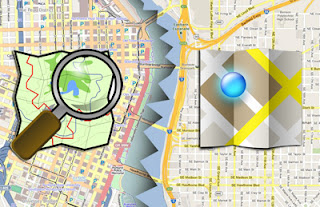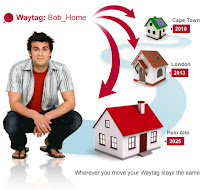Back in 2010 when we were playing with friends doing some mapping mash-ups, I’ve asked one of them “Why are you using Open Street Maps when you have Google Maps for free?”, and he said “What if one day Google starts charging for its Maps…”, I thought – impossible… until October 2011 when Google announced that starting from January 2012 they will start charging for usage of they’re mapping service.
How much?
Sites were offered Google Maps Premium – a paid for service starting from $10,000 a year, which also offers branded maps and custom uses of Google Maps. If they opt not to pay for this, fees are $4 per 1,000 page loads over the 25,000 per day – or $10 per Street View load over the 10,000 per day.
‘Google Maps will remain free for most users. Only the top 0.35% of sites will be affected by the new pricing structure if they continue to exceed the usage limit of 25,000 map loads per day’ said Google spokesman Sean Carlson. But James Fee Chief Evangelist for WeoGeo don’t agree with that: “Google says it will affect a very small number of users, but I have heard it will touch 30 or 40 percent of people who really depend on maps for their business. It could cost you tens of thousands of dollars a month.”
Who will gain on this change?
Since this announcement starting from the beginning of 2012 many services ditched Google Maps for other products. This can in fact be good for other mapping solutions providers. According to
comScore, Google Maps had 65 million users in February 2012, a 16 percent increase from the year before. MapQuest had 35 million hits, a 13 percent decrease. Microsoft’s Bing Maps came in third with 9 million users, an 18 percent increase. OpenStreetMaps didn’t generate much web traffic, but it seems that it’s going to change soon.
Time to say goodbye!
Starting from February 2012 Foursquare said to give up Google Maps and switched to OpenStreetMap. Apple’s iOS version of iPhoto also gave up Google Maps, turned to the OpenStreetMap. In March Wikipedia has dropped Google Maps for OpenStreetMaps as well. The pricing was “significantly higher than I think anyone anticipated,” said Russell Cook founder and CEO of AllTrails – a big social network for outdoors enthusiasts, that partnered with National Geographic Maps and started moving away from Google. In March TripAdvisor quietly switched from Google Maps to Bing Maps, that also charges for using it’s API but probably it managed to undercut Google by a sufficient margin to make it worth changing.
Give a thing, and take a thing, to wear the Devil’s gold ring.
“Deep down I think the developer community knew that at some point the Google APIs they were using would stop being free,” Russell Cook said, “but I don’t think they ever expected the price gouging. My personal opinion is that Google has every right to charge for the services they are providing, but their recent actions have been very short sighted”. In fact Google was one of few mapping services that offered usage if their data for free. It’s not the only service Google charges for – using Google’s office services at a corporate level is already a paid-for service – but it’s among the first times the site has offered something for nothing then gone back.
The Google Maps API product manager, Thor Mitchell, commented on the change: “We understand that the introduction of these limits may be concerning,” he stated. “However, with continued growth in adoption of the Maps API, we need to secure its long-term future by ensuring that even when used by the highest volume for-profit sites, the service remains viable.”
Conclusions
In fact for most of us it doesn’t change much. For regular users Google Maps will be for free. Now Google has a difficult task to inspire a new class of Maps apps whose businesses aren’t dependent on free data, that might be beneficial for the end-user. Meanwhile the competition on the market will surely work for the favor of all of us… and especially for OpenStreetMaps, whose founder – Steve Coast has recently landed a job at Microsoft, that is already supporting the OSM project with map data and other resources.
sources:
ReadWriteWeb, TechSpot,






